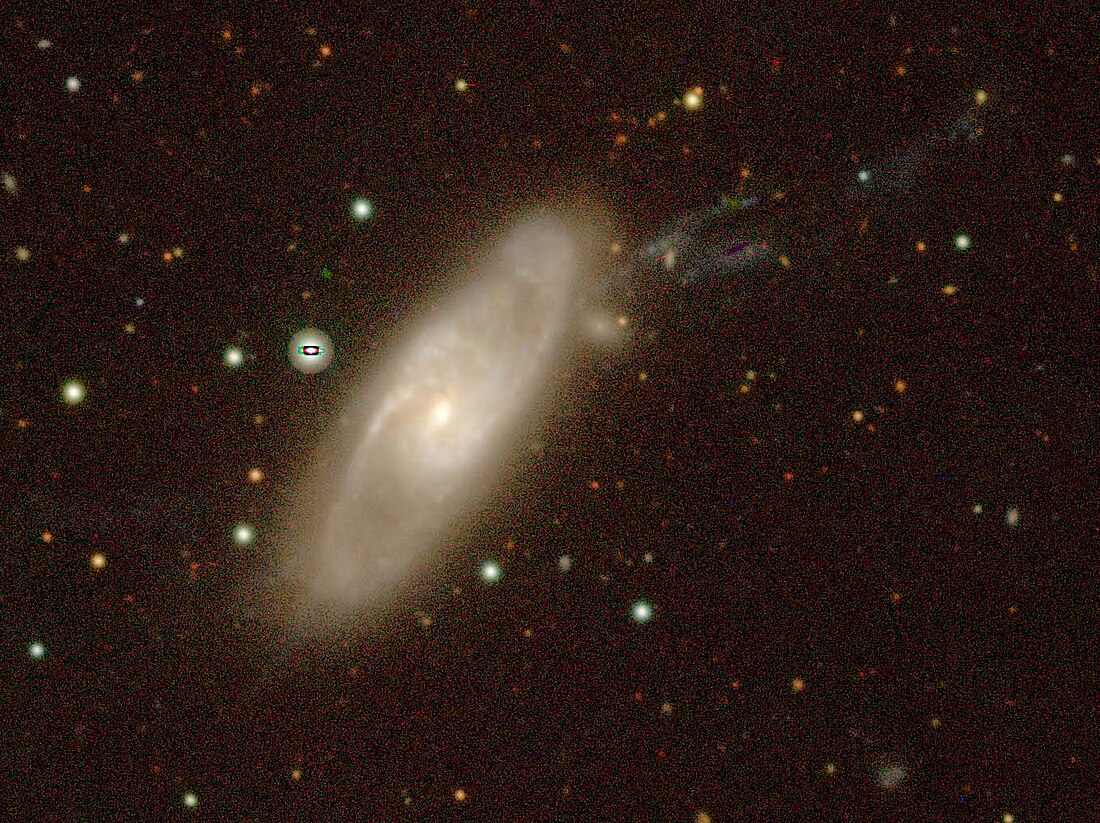Top Qs
Timeline
Chat
Perspective
NGC 1134
Spiral galaxy in the constellation Aries From Wikipedia, the free encyclopedia
Remove ads
NGC 1134 is a spiral galaxy in the Aries constellation. Its velocity with respect to the cosmic microwave background is 3,426±15 km/s, which corresponds to a Hubble distance of 164.8 ± 11.5 Mly (50.53 ± 3.54 Mpc).[3] However, five non-redshift measurement gives a much closer distance of 116.31 ± 3.03 Mly (35.660 ± 0.929 Mpc).[5] It was discovered by German-British astronomer William Herschel on 16 October 1784.[6][7]
NGC 1134 has a highly inclined disk, with respect to the line of sight from Earth. There is a weak outer extension of the spiral structure in this galaxy. It has been listed in the Arp Atlas of Peculiar Galaxies (Arp number 200), under the "Galaxies with material ejected from nuclei" section.[8] NGC 1134 is classified as a galaxy with reduced surface brightness, and it possesses a distinct bulge in its centre, as judged by photometric analysis. It has a small and distant companion about 7' to the south.

Remove ads
Supernova
One supernova has been observed in NGC 1134: SN 2025pfh (Type Ic, mag. 19.0895) was discovered by Zwicky Transient Facility on 26 June 2025.[9]
See also
References
External links
Wikiwand - on
Seamless Wikipedia browsing. On steroids.
Remove ads

